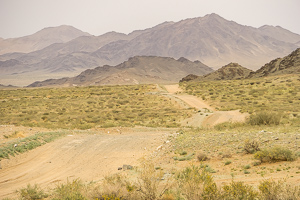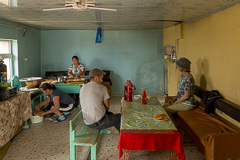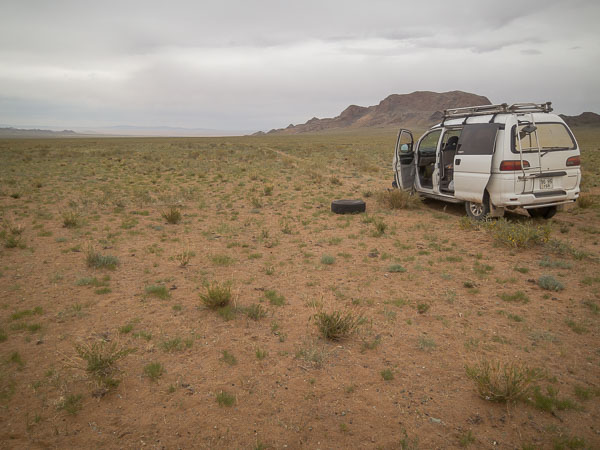Finding Western Zavkhan

Best Road Across Zavkhan
Now our goal was to see some of this land, and get to that far-western corner of Zavkhan Aimag and back —about two thousand kilometers—in eight days, to catch Judy's plane home. On paved roads in the US, this might have been done in three, but that is not how we would be traveling. And although eight days seems like it would be a leisurely amount of time to spend, it was not.
For an interlocking set of reasons, Western Zavkhan is not a tourist destination in Mongolia, starting with the fact that not many people know what is there. After seeing this land from the air, I made a point of asking people who seemed knowledgeable at every opportunity. I found that few knowledgeable people were quite that knowledgeable, and that the small handful who had been there were not eager to go back. "Why would you want to go there?" they wondered when they learned my reason for asking. "It is very difficult."

Restaurant, Dorvoljin, Western Zavkhan
Travel is also difficult because the small black dots you see connecting the lines on the map don't mean what you think they mean. They may mean that you can buy drinking water, but not necessarily that you can get a tire fixed. In western Zavkhan, these dots don't mean that when you are near them you can connect to a mobile phone carrier, or that if you can get to one of these dots, that you could buy a part for the particular year and model of Japanese mini-van you are riding in. These are not facts that jump out at you when you are sitting at your table at home looking at the map, but they do occupy your imagination once you have helped your driver install your last spare tire, or in the middle of the road, as you grind to a halt with a bigger problem.
Because it is difficult, not many people go to western Zavkhan. Because not many people want to go there, not many professional drivers from the rest of the country have ever been there, and consequently, know how to find their way around there. And because so few people go there, there's really no need for better roads. Most tourists don't know that it is among the most remote places in Mongolia, which really is saying something, since the quest for remoteness is why many tourists come to Mongolia.
We told our friend Anand, at Zaya Guest House, what we wanted to do several months in advance, but it took until a few days before we planned to leave for him to decide on a driver who he hoped could get us there and back. The trip required someone with the desire to travel where they had never been before (none of Anand's drivers had been to Zavkhan) and who owned a vehicle with a reasonable chance of surviving the punishment it would take. It would help if that person had good mechanical skills and spoke enough English to help us to communicate, given the sad state of our Mongolian. In the end he matched us with Sonoo, and his newly painted Mitsubishi Delica. All of his skills and resources came in handy, and perhaps some he didn't know about before this trip.
In Mongolia, professional drivers have a very different status than they do in the United States. This notebook will provide an explanation. It is a tribute to Sonoo.
